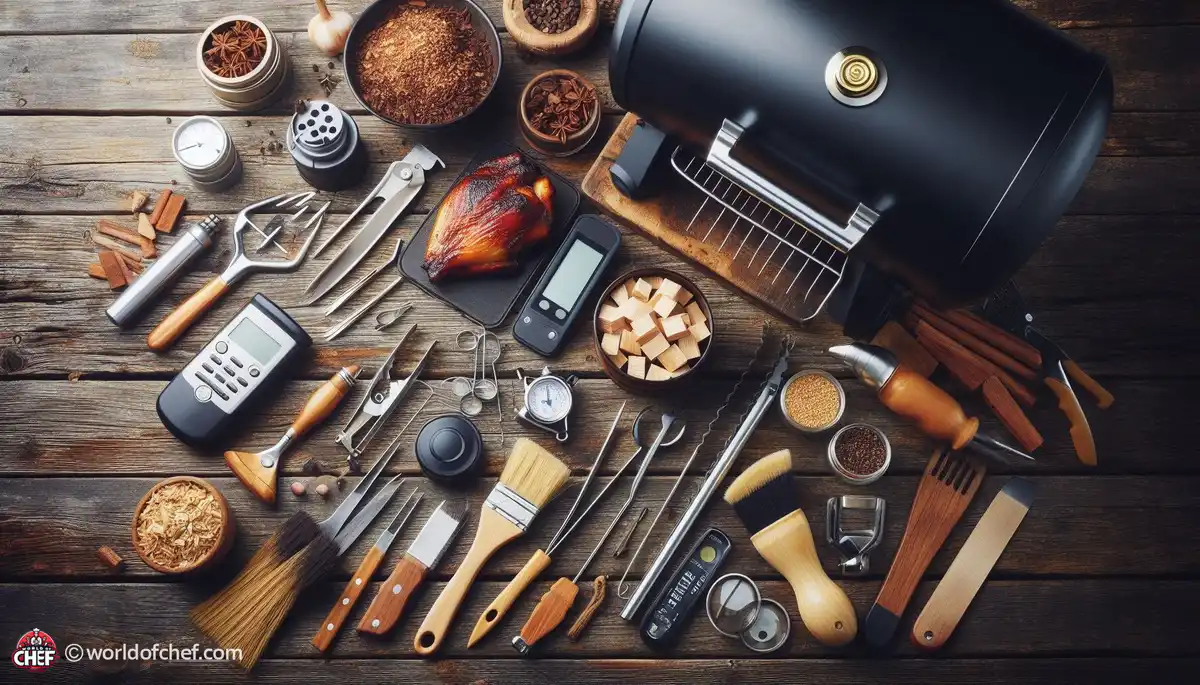
Simmering with Spices: Infusing Flavor into Your Dishes
Emery Donley - Oct 8, 2024 - 8 min read


One technique that's been around the block for centuries is that of smoking food, flavoring meats, fish, and vegetables with rich flavors that appeal to the sensitive taste buds. To dive into this culinary adventure you will require a basic awareness of how smoking works along with what equipment you must have on hand. Whistling pits or novice smoker, perfecting the act of smoking begins with learning the best equipment and processes.
The market has a wide array of smokers. Although the ones differ in terms of features and advantages, they may be traditional charcoal types, or modern electric types and propane models, hence, your preference, budget, and personal space may depend on your choice, so knowing what exactly differentiates these will guide you to a successful choice, set you forth to being a proficient smokes. Bare Basic Smoking Equipment
The heart of every smoking setup is the smoker. That's where the magic happens: the place where slowly enfolding flavorful smoke imbues mouthwatering aromas on your food. Smokers come in a variety of shapes and sizes-from compact barrel smokers to large offset models. Prior to selecting a smoker, consider its capacity, type of fuel, and available temperature controls.
Your wood chipping or chunks provide the smoke that will be transferred to flavors into your food. The variety of woods used imparts different flavor levels, such as the sweetness of the applewood to the smokiest flavoring that you can get from the hickory. You can continue experimenting with different variants to find one which you like best and be used later in your smoked foods and dishes.
No pitmaster-in-the-making would miss out on a good thermometer as an accessory. The monitoring of the temperature of your smoker and your food must always be in order, ensuring perfectly smoked dishes each time. You must spend money on a quality digital thermometer with probes for the smoker and the meat for clear temperature readings all throughout cooking.
Provide hand protection in case you're handling hot grates, pans, or food. This ensures safety and comfort in handling your smoker without the threat of burns or injuries. Dexterity along with protection in maneuverability around your smoker to readjust food will be obtained through heat-resistant BBQ gloves.
Before smoking for the first time, season your smoker to eliminate production residues and add a protective layer of seasoning on the interior surfaces. Seasoning involves applying oil inside the smoker, heating it to a high temperature so that it creates an impermeable barrier against rust and the retention of flavors.
With adequate preparation of the wood chips or chunks you intend to use, the process guarantees high smoke and consequently an infusion of flavour. If you are preparing for usage with wood chips, they should be well soaked for at least half an hour to ensure proper smoldering. Where bigger pieces of wood such as wood chunks are employed, there is a possibility to pre-soak these wood pieces for hours before actual cooking to ensure balanced combustion throughout the smoking duration. Knowledge of Smokers Technique
Temperature should be held constant for smoking. Based on the type of smoker, one may need to control air flow, fuel supply, or temperature control in achieving the desired level of heat. Monitoring the temperature and making adjustments within a prompt time will negate those that will affect the quality of your smoked food.
Perfect smoky flavors demand skill and patience. Too much smoke tastes foods as bitter and quite a bit acrid, whereas little or no smoke contributes to foods that are lacking in the right measure of smokiness. Balancing between how strong and how long to smoke will ensure that your well-balanced food does not end up without good flavor.
The biggest challenge for a new smoker is maintaining the consistency of heat in the process. Ambient temperature, wind, and other factors related to fuel can affect the performance of your smoker. What that means is constant checks of temperatures and minor adjustments to keep temperatures within the range at which smoking is most ideal.
Over-smoking will occur when food is smoked using very high levels of smoke for a long period of time, causing overpoweringly unpleasant flavors. Prepare food with low levels of wood and continuously assess how heavy the smoke has gotten in the period. You can decrease wood content when the smoke turns heavy, or you could allow adequate airflow for increased diffusion.
It's very rewarding to start the journey of smoking food as you unleash your creativity and culinary skills. You will have the best mouthwatering smoked dishes in front of your friends and family, with the knowledge and equipment acquired from this guide, as well as mastering all the techniques involved. So fire up that smoker, experiment with those flavors, and enjoy the delicious results of your smoking endeavors!

Emery Donley - Oct 8, 2024 - 8 min read

Russell Comeaux - Oct 8, 2024 - 8 min read

Walter Backus - Oct 7, 2024 - 8 min read

Samantha Thames - Oct 7, 2024 - 6 min read